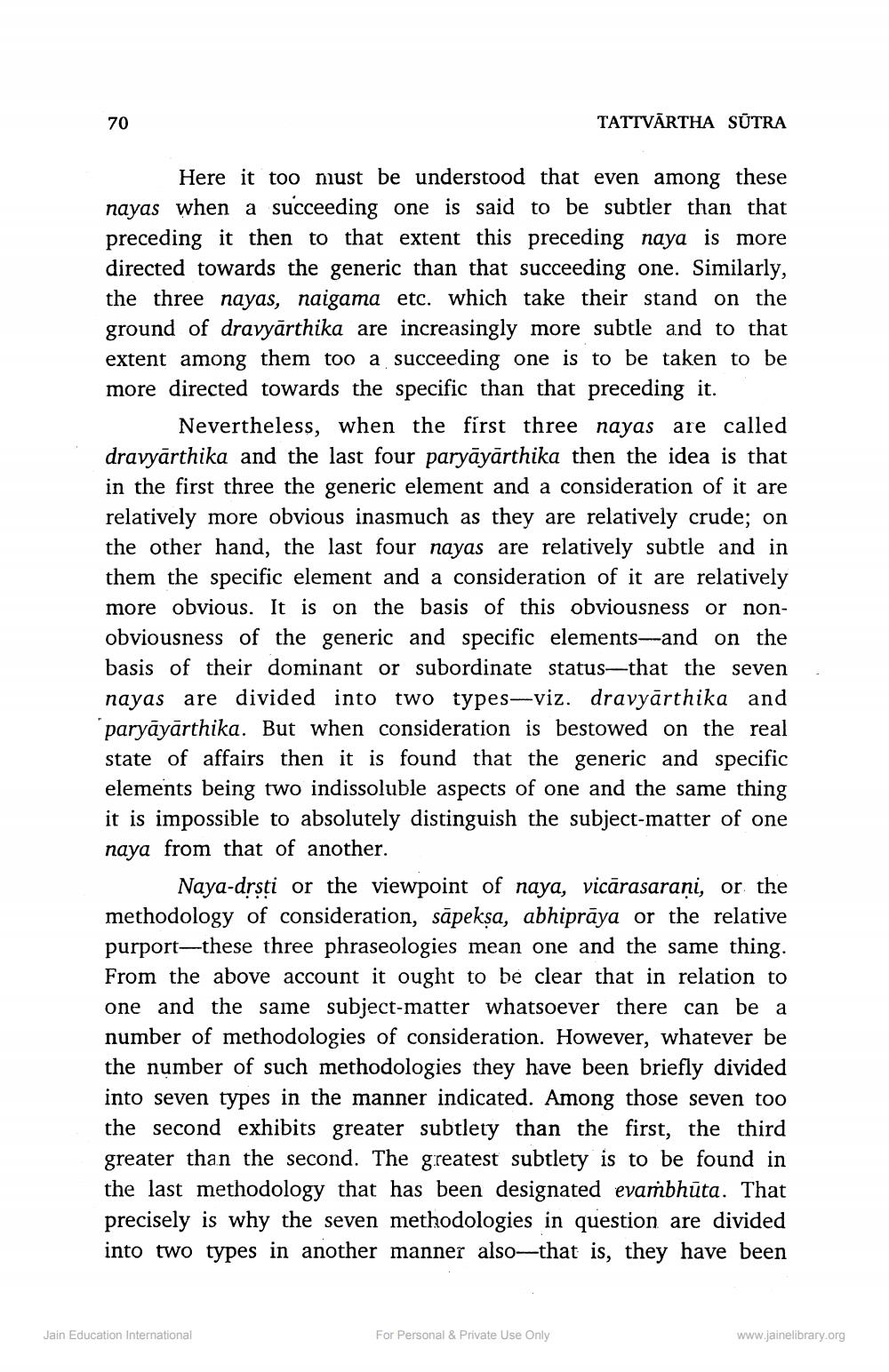________________
TATTVĀRTHA SŪTRA
Here it too must be understood that even among these nayas when a succeeding one is said to be subtler than that preceding it then to that extent this preceding naya is more directed towards the generic than that succeeding one. Similarly, the three nayas, naigama etc. which take their stand on the ground of dravyārthika are increasingly more subtle and to that extent among them too a succeeding one is to be taken to be more directed towards the specific than that preceding it.
Nevertheless, when the first three nayas are called dravyārthika and the last four paryāyārthika then the idea is that in the first three the generic element and a consideration of it are relatively more obvious inasmuch as they are relatively crude; on the other hand, the last four nayas are relatively subtle and in them the specific element and a consideration of it are relatively more obvious. It is on the basis of this obviousness or nonobviousness of the generic and specific elements--and on the basis of their dominant or subordinate status—that the seven nayas are divided into two types-viz. dravyārthika and paryayarthika. But when consideration is bestowed on the real state of affairs then it is found that the generic and specific elements being two indissoluble aspects of one and the same thing it is impossible to absolutely distinguish the subject matter of one naya from that of another.
Naya-drsti or the viewpoint of naya, vicārasarani, or the methodology of consideration, sāpeksa, abhiprāya or the relative purport-these three phraseologies mean one and the same thing. From the above account it ought to be clear that in relation to one and the same subject-matter whatsoever there can be a number of methodologies of consideration. However, whatever be the number of such methodologies they have been briefly divided into seven types in the manner indicated. Among those seven too the second exhibits greater subtlety than the first, the third greater than the second. The greatest subtlety is to be found in the last methodology that has been designated evambhūta. That precisely is why the seven methodologies in question are divided into two types in another manner also—that is, they have been
Jain Education International
For Personal & Private Use Only
www.jainelibrary.org




